COVID-19 heightens US–China tensions
Author: Editorial Board, ANU
As we try to imagine what the world will look like after COVID-19, a central question is whether the pandemic will exacerbate or alleviate tensions between the United States and China.
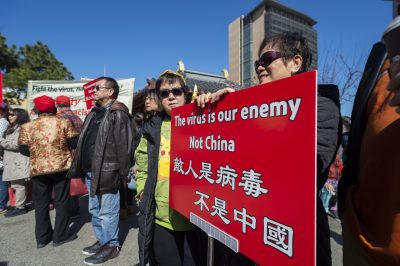
In the past, major crises have been catalysts for cooperation between the world’s two leading powers. During the global financial crisis, the George W Bush and Obama administrations found ways to work productively with the Hu Jintao government of the time in managing and rebuilding the global economy, despite serious economic, political and strategic strains in their bilateral relationship.
This time around, the picture is a more worrying one.
Rather than providing the impetus for greater cooperation, COVID-19 has instead reinforced the most dangerous dimensions of US–China rivalry.
First, the pandemic has laid bare a US system that commands some of the world’s leading health expertise, but whose domestic and international response has raised serious questions about US capacity to lead.
The pandemic has exposed the worst of US President Donald Trump’s ‘America First’ doctrine, and its overwhelming concern with relative US gains at the expense of the global good. Trump has focused on criticising Beijing’s response to the virus outbreak jeopardising international cooperation on the pandemic response by insisting on referring to COVID-19 as the ‘Wuhan’ or ‘Chinese’ virus.
As Ryan Hass and Kevin Dong argue in our lead article this week, ‘many American policymakers view coordination with China on COVID-19 response as a self-harming exercise in a zero-sum competition for global leadership’. Some in the Trump administration are betting that underscoring the origin of the virus will take the shine off China’s power and prestige.
Yet these actions have undermined US leadership, which is being judged not only in terms of how effectively the United States manages the virus response within its own borders, but also on how the United States works with others, including China, to use its power, resources, and expertise to confront the crisis globally.
Second, COVID-19 has highlighted that the Chinese political system is at once highly capable, deeply flawed, and fundamentally concerned about threats to the Chinese Communist Party’s (CCP) hold on power.
The Wuhan lockdown is widely recognised as having been effective in curbing Chinese and global infection rates. But this success came only after weeks of suppression of information, and ‘feigned compliance, distortion and subterfuge’ by local officials, allowing the virus to spread more quickly and with catastrophic consequences for the people of Wuhan.
For Xi Jinping, COVID-19 threatens China’s domestic economic and social stability, and reveals core problems with the CCP’s governance model. More worryingly for a leader like Xi, who holds China up as an international model of good governance and development, the pandemic has made China the source of what will likely be the greatest disruption to society and the economy globally since the Second World War.
As a result, ‘top Chinese officials have matched their US counterparts in their myopia, spreading fringe conspiracy theories about the virus originating outside of China and arguing that Beijing’s response to the virus outbreak demonstrates the superiority of its governance system. Such efforts advertise China’s insecurities and weaknesses more than its strengths,’ Hass and Dong suggest.
Third, COVID-19 has showcased the enormous costs we all stand to face from economic decoupling. Global trade was falling through 2019 before the estimated collapse of Chinese output by 9 per cent in the first quarter of this year. As Findlay, Kimura and Thangavelu write in another of this week’s feature articles, ‘the economic shutdown from COVID-19 has sent shock waves through international trade, running up and down global value chains’, cascading the economic shock through supplier countries. As the United States and other major economies shut down and China begins an uncertain recovery, the threat from knee-jerk protectionism to global trade recovery looms large.
Many have taken the wrong lesson from the pandemic’s economic fallout. White House trade adviser Peter Navarro has called for further unwinding of US economic ‘dependence’ on China, particularly in the export of pharmaceuticals and medical devices, and a series of Republican senators have introduced new legislation designed to achieve that end.
Equally worrying are voices from both inside and outside China who are suggesting that COVID-19 could prove a windfall for Chinese manufacturing as foreign investors look for recovered economies in which to invest. Others have gone so far as to argue that ‘Beijing may now see little to fear from a decoupled world which may occur increasingly on its own terms.’
These are dangerously optimistic views.
The Chinese economy cannot bounce back without sustained demand from markets in the West. But all the major economies have by now entered their own COVID-19 lockdowns, and are shutting down non-essential business. This will ‘disrupt supply chains and curtail demand for China’s exports, which equate to almost 20 per cent of China’s GDP’, Neil Thomas observes in another feature piece this week.
It is for this reason that People’s Bank of China adviser Ma Jun says China should abandon its growth target this year, because China’s growth ’will largely depend on how the pandemic develops in Europe and the United States’. Others are forecasting China’s growth rate will be just 2.9 per cent in 2020, the lowest since the Cultural Revolution.
The simple reality is that the United States and China will recover from this crisis together, or not at all.
It’s a reality that is understood across the Asia Pacific region, where countries have long been uninterested in the idea of a ‘new Cold War’ in Asia, and are now looking for US–China cooperation rather than rivalry in handling the crisis.
In recent days we’ve seen glimpses of a thawing in US–China tensions, with Trump and US State Secretary Mike Pompeo abstaining from the use of the term ‘Wuhan virus’, and the two countries’ top health officials discussing pandemic prevention efforts by phone. The US shortage of face masks, gloves and other personal protective equipment was also briefly alleviated this week when planeloads of badly-needed medical supplies arrived from China.
These are welcome signs, but much more serious cooperation will be needed if the two countries are going to work together to effectively manage the crisis.
Otherwise ‘buckle up’, say Hass and Dong, ‘because things are likely to get worse before they get better’.
The EAF Editorial Board is located in the Crawford School of Public Policy, College of Asia and the Pacific, The Australian National University.
This article is part of an EAF special feature series on the novel coronavirus crisis and its impact.

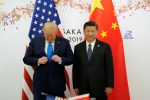
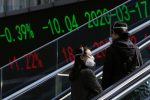

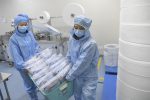


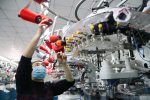
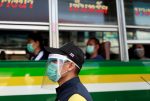
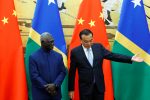






East Asia Forum welcomes comments, both for adding depth to analysis and for bringing up important new issues. Original comments adding insight and contributing to analysis are especially encouraged.
The editors retain the right to refuse and edit comments at any time.